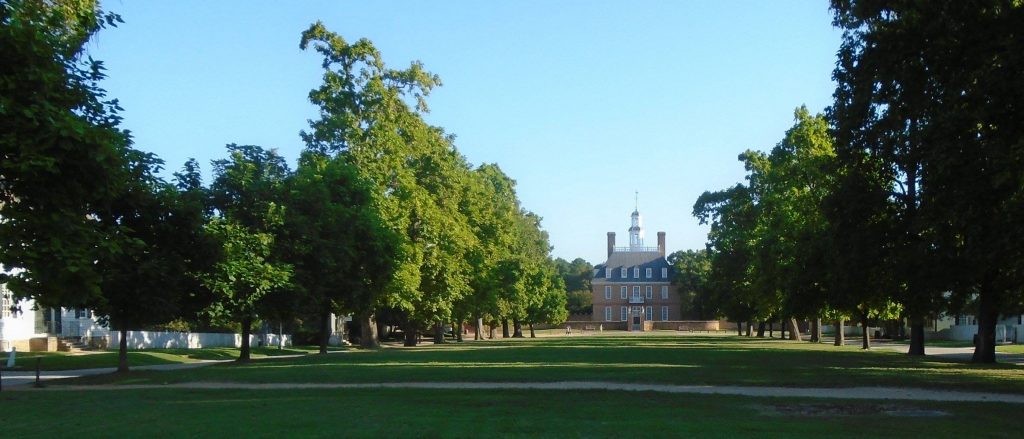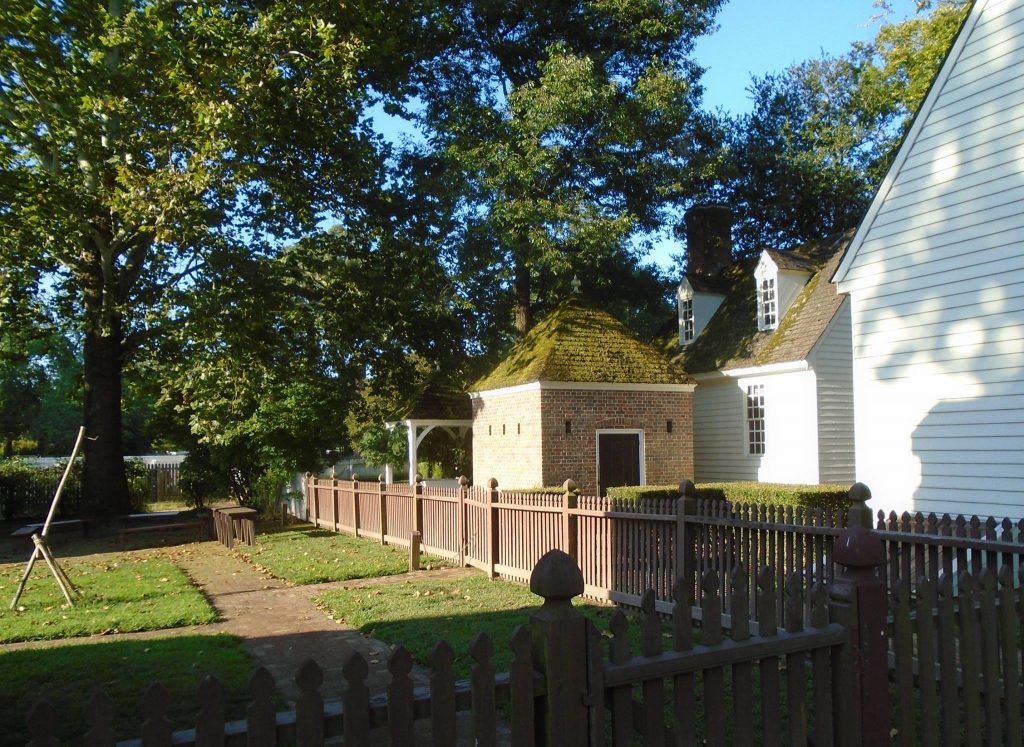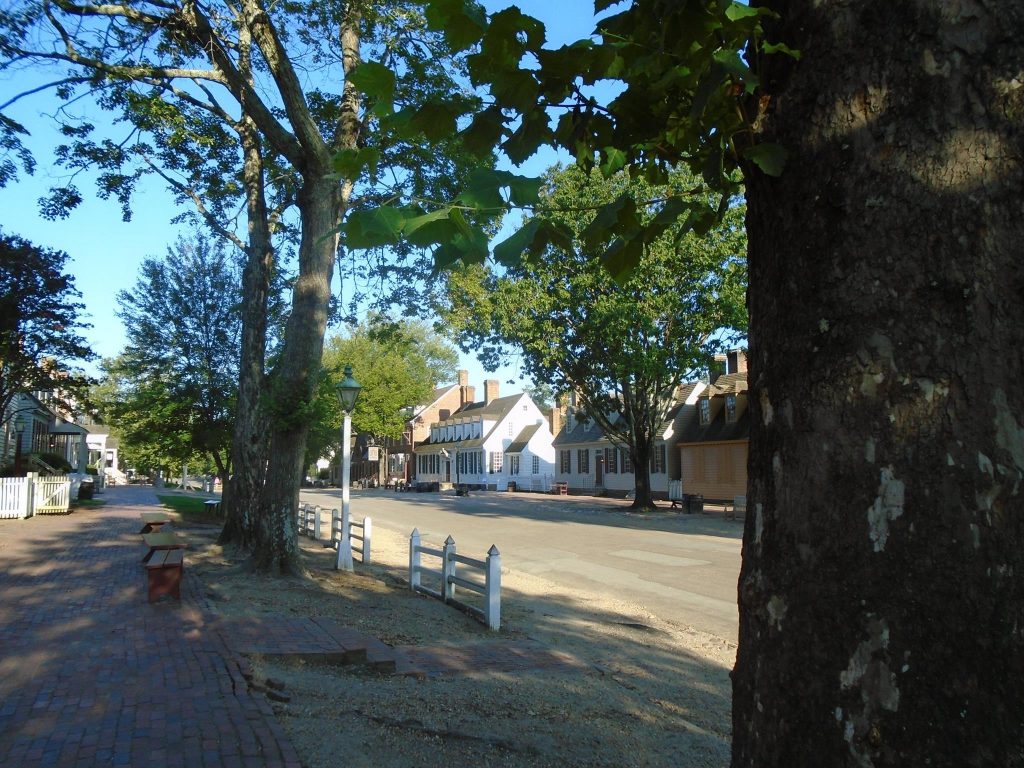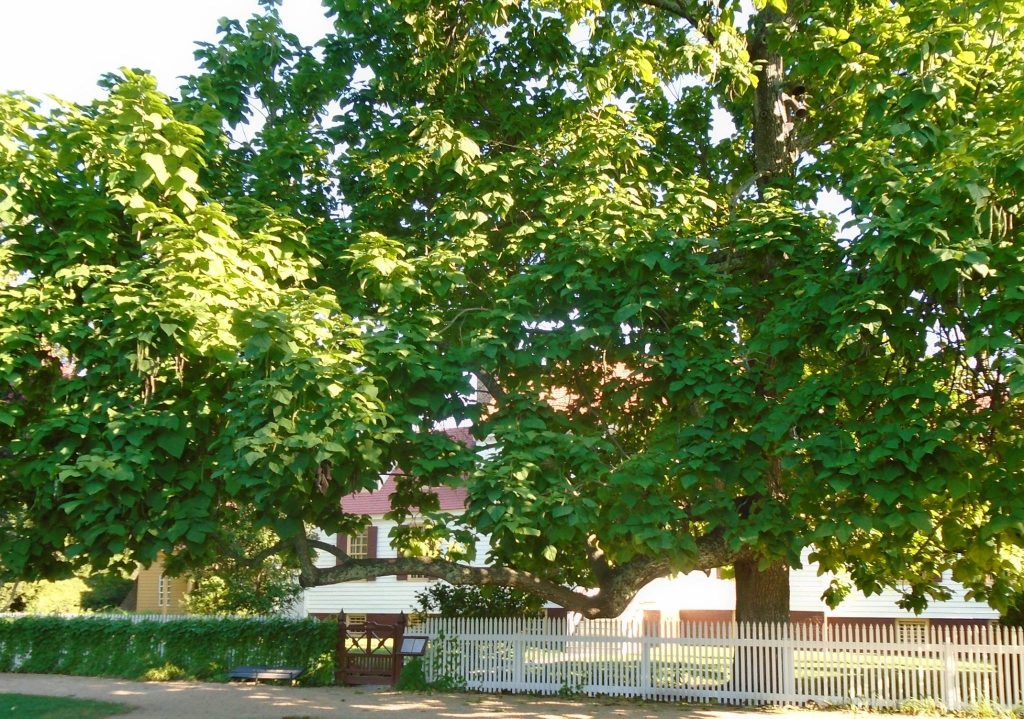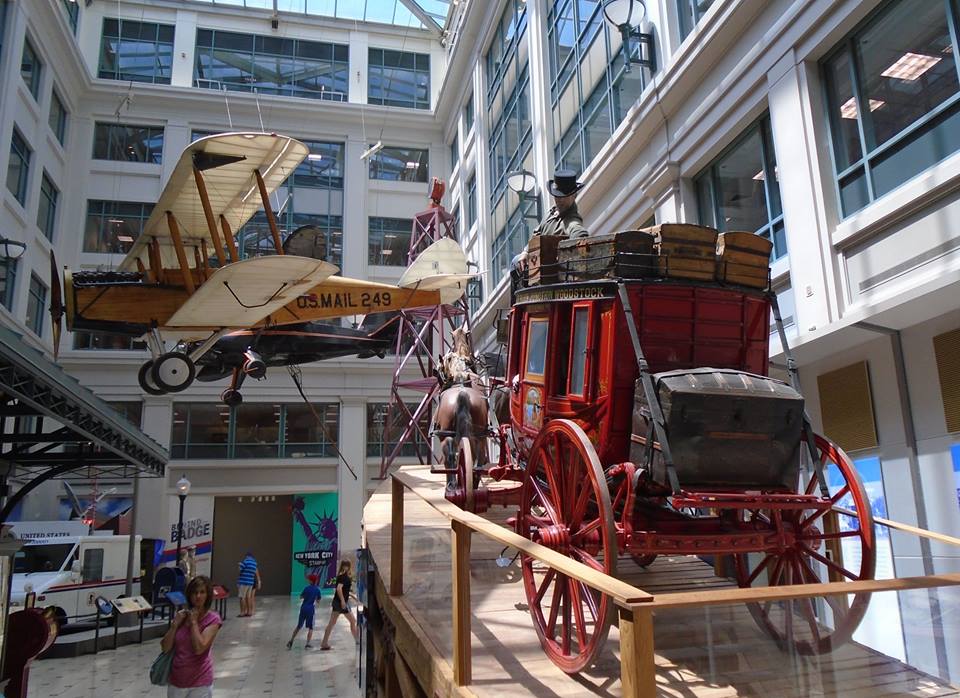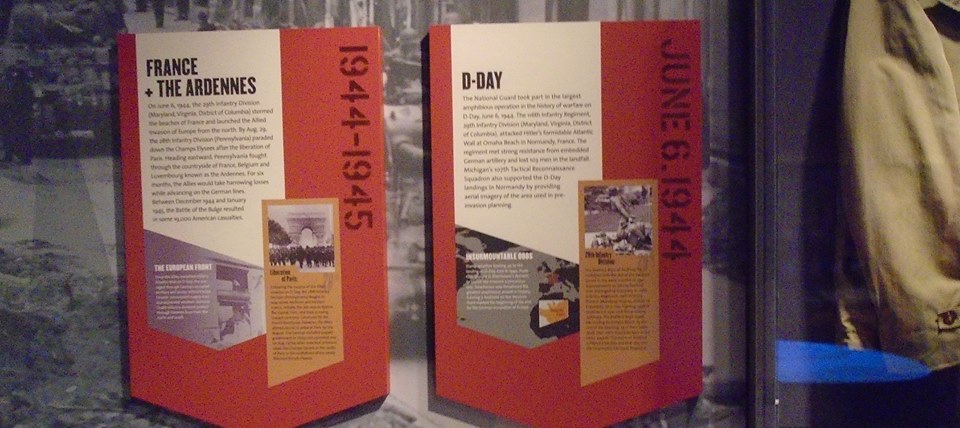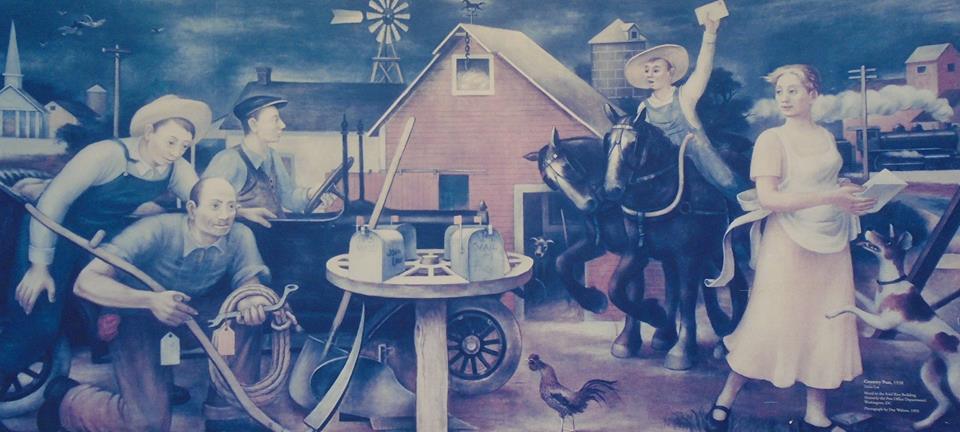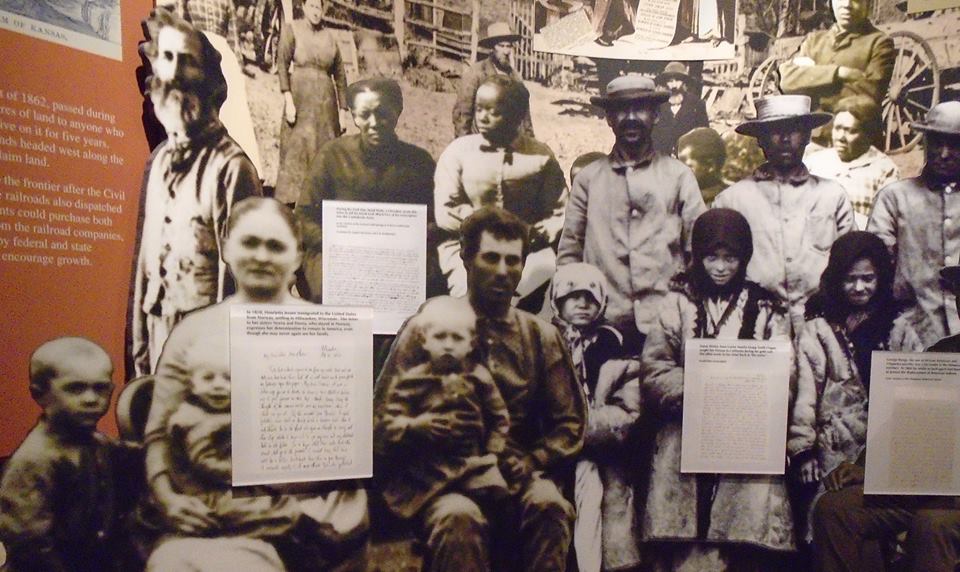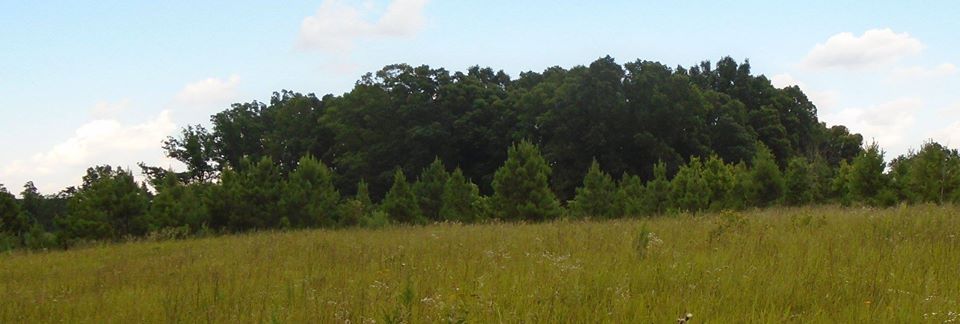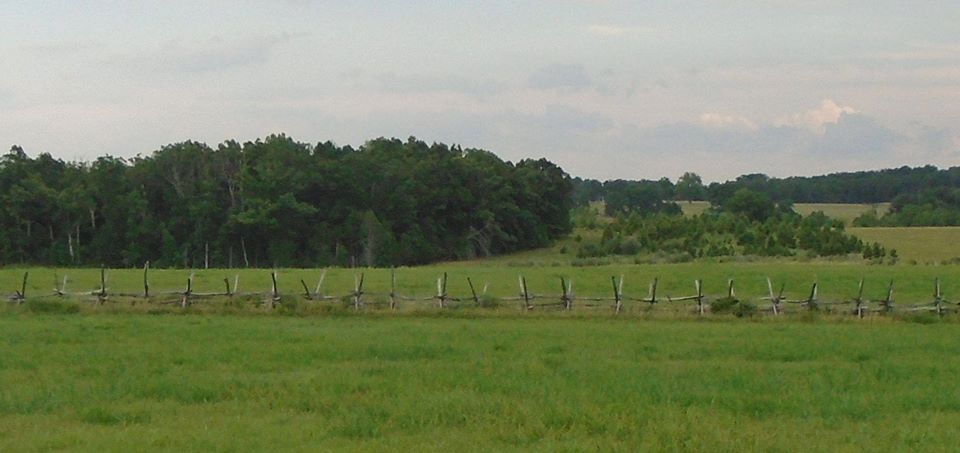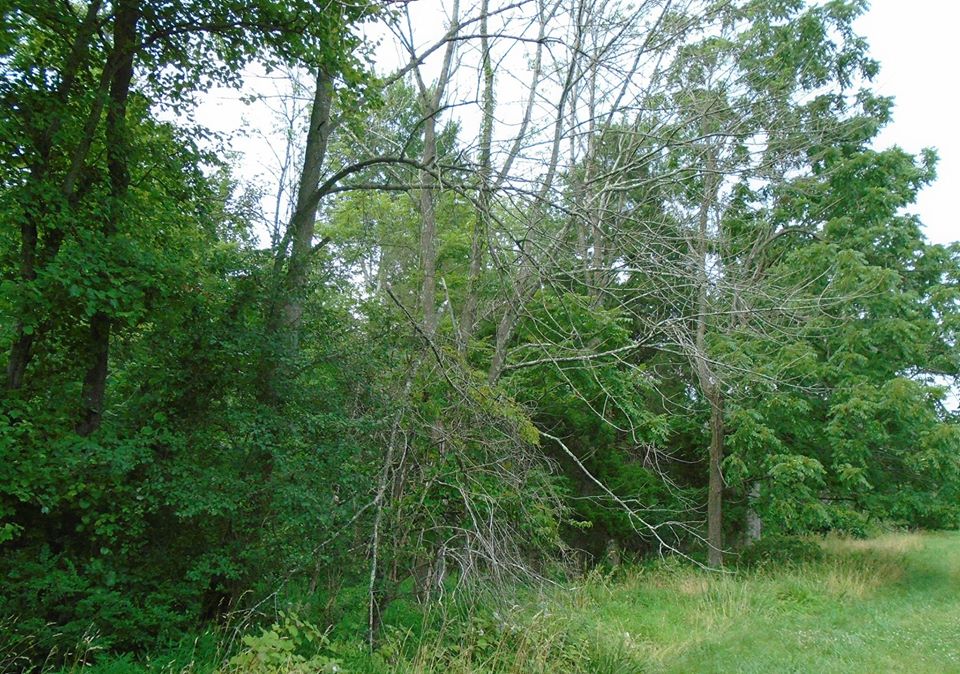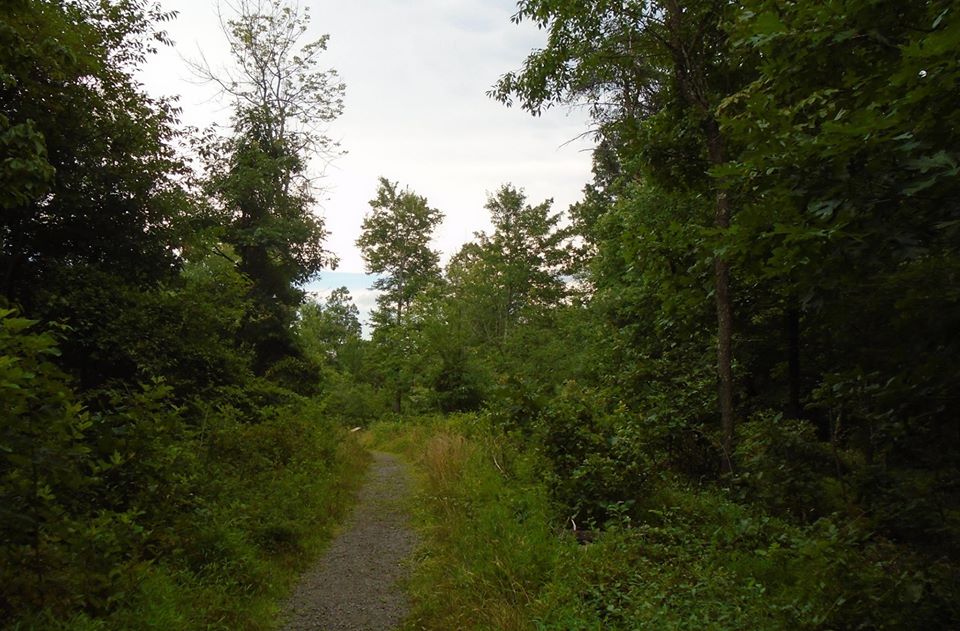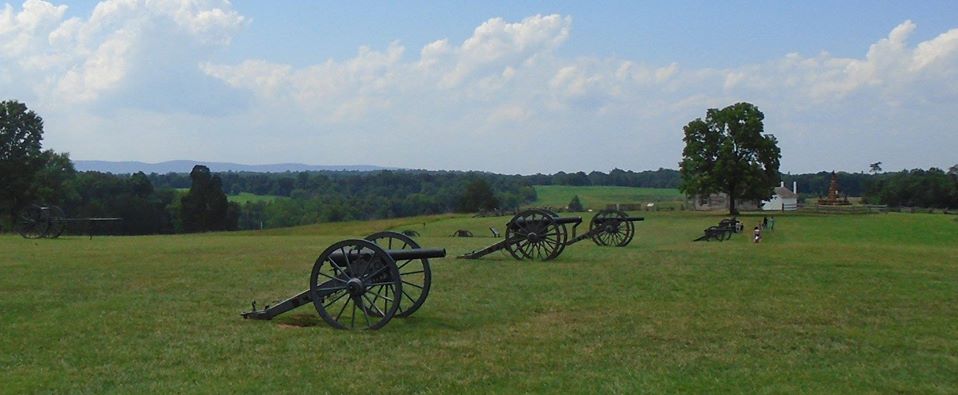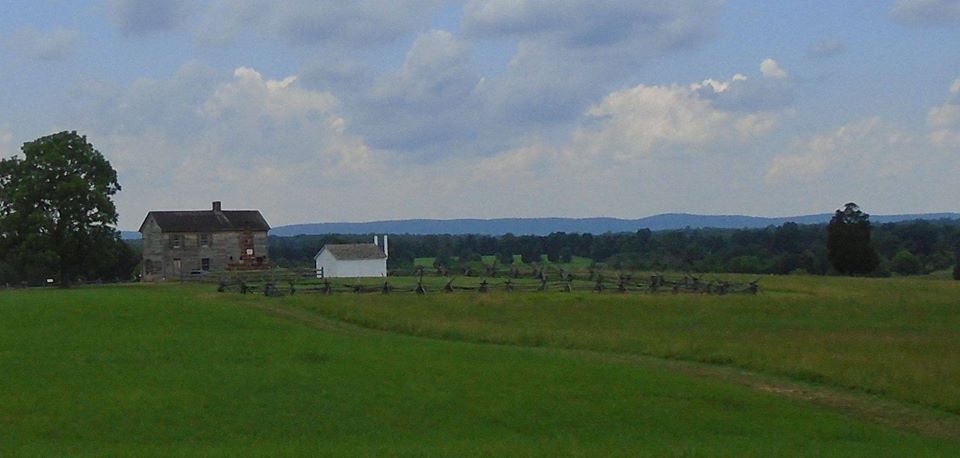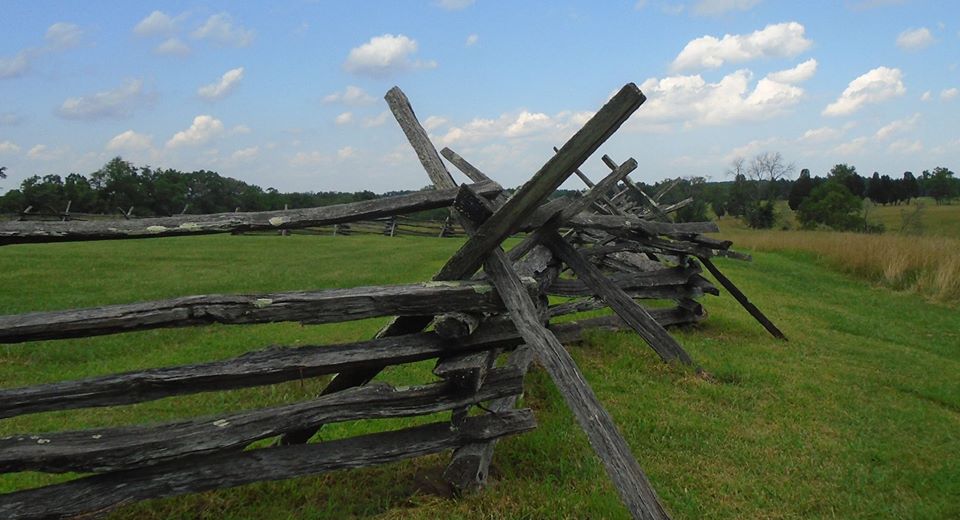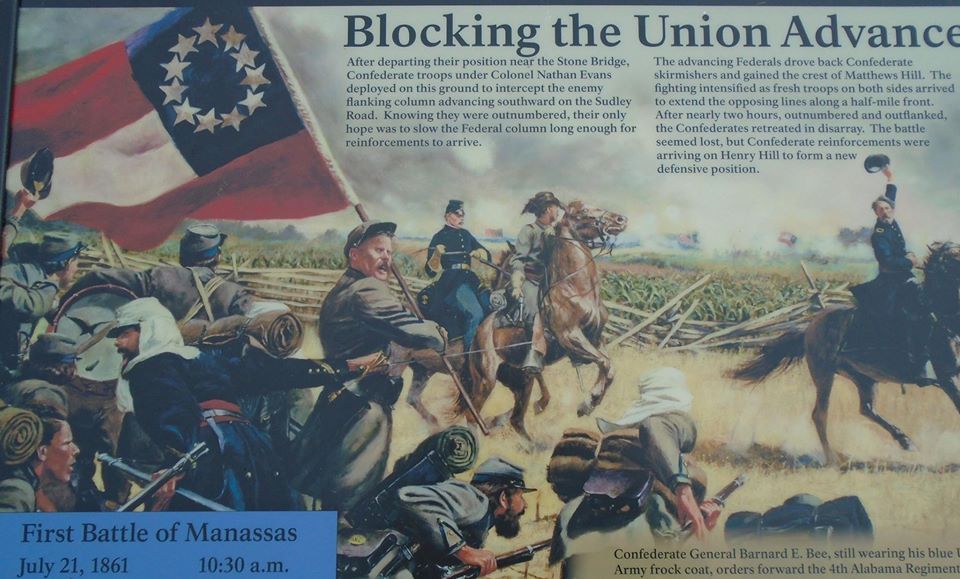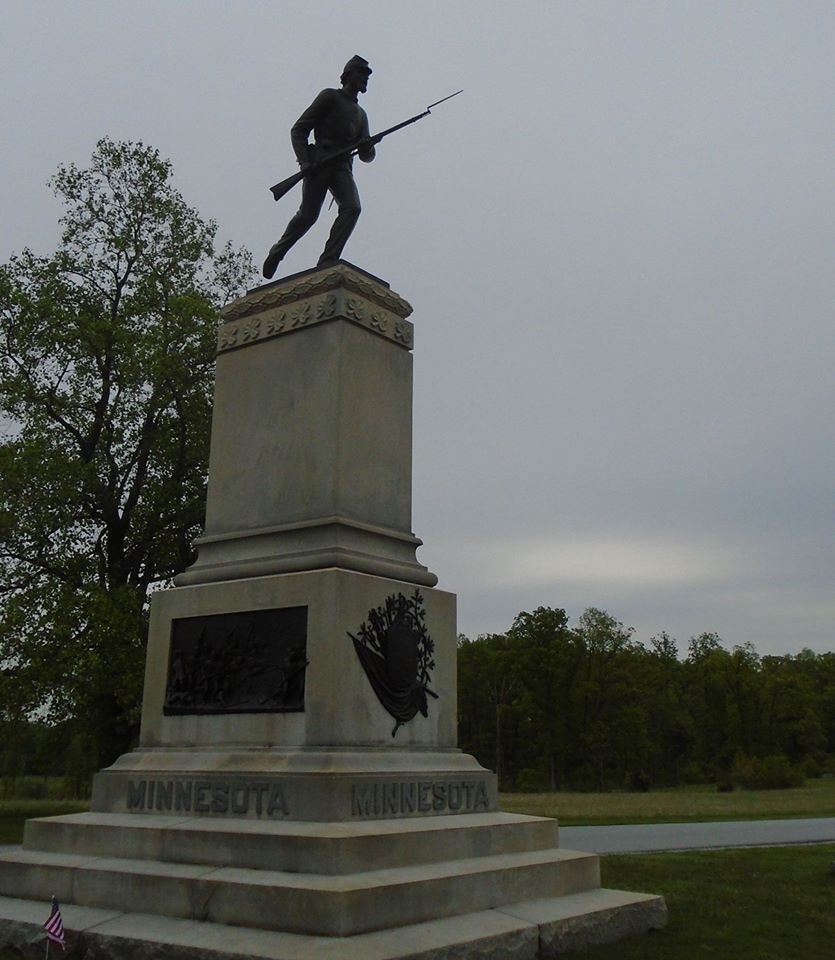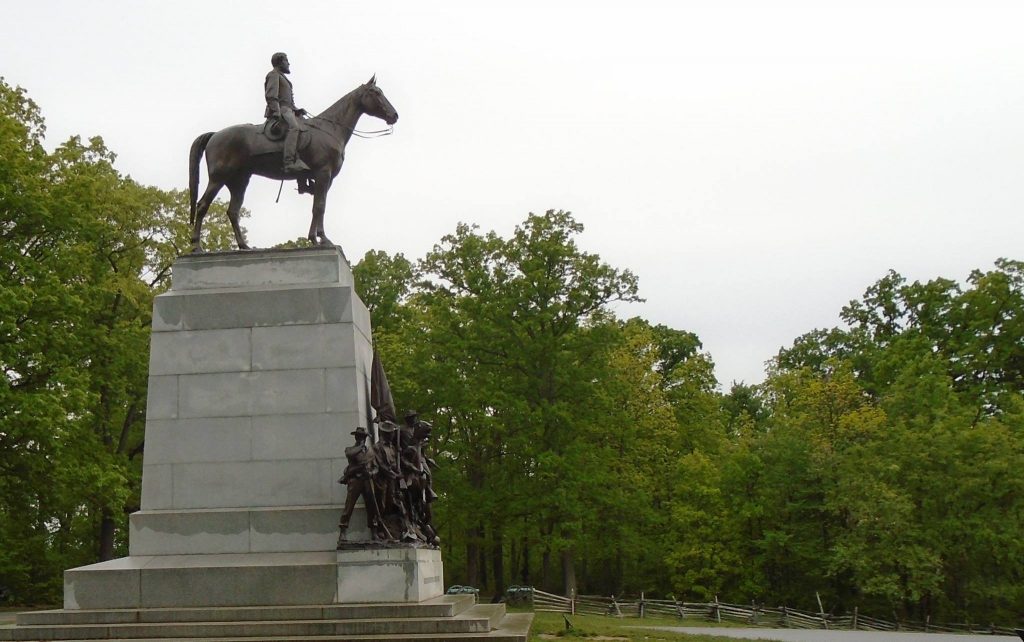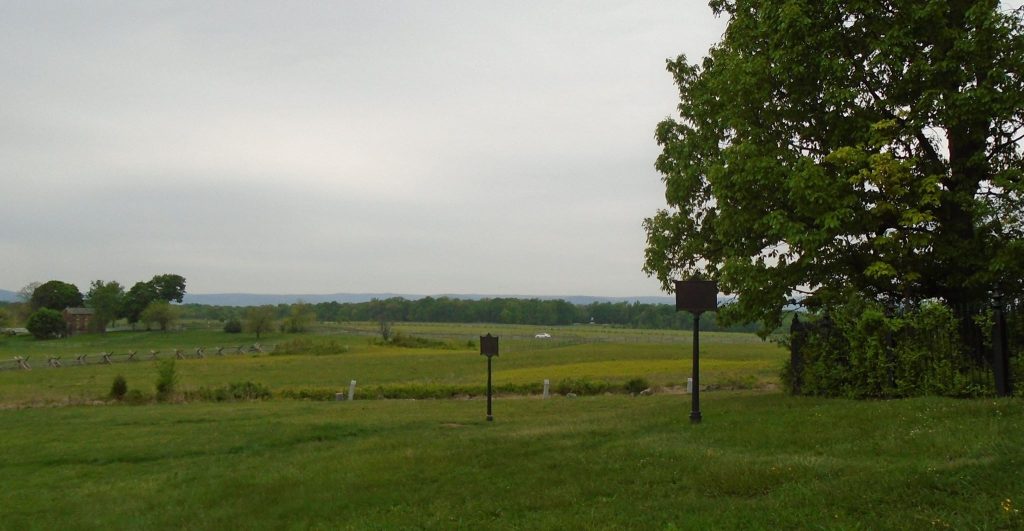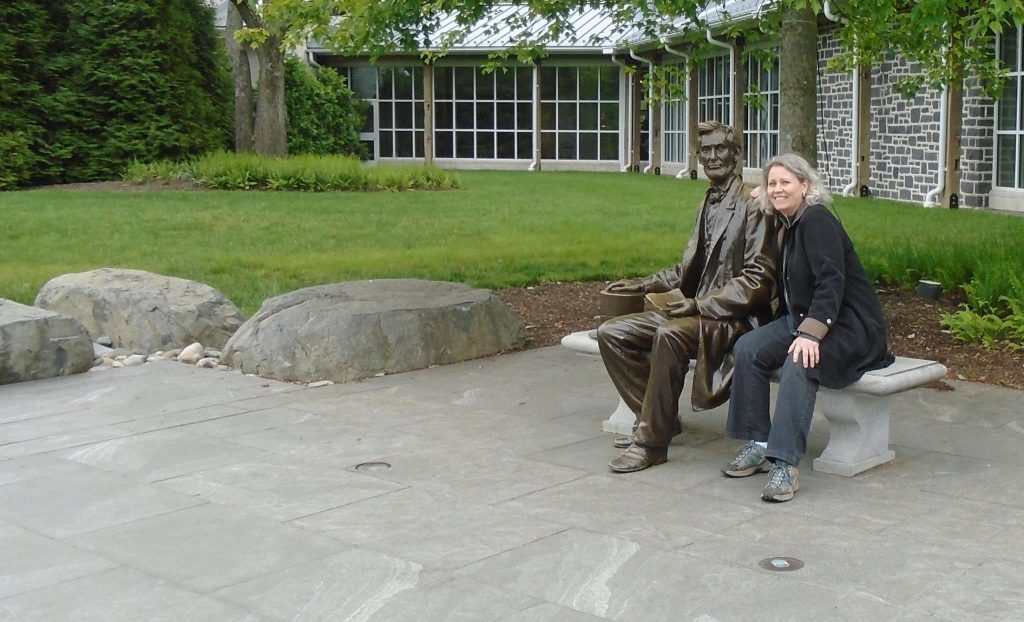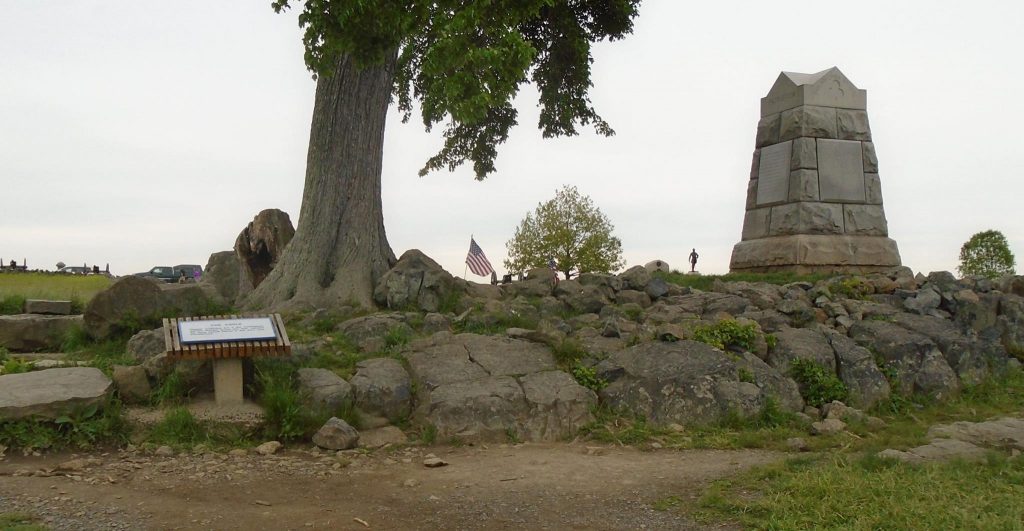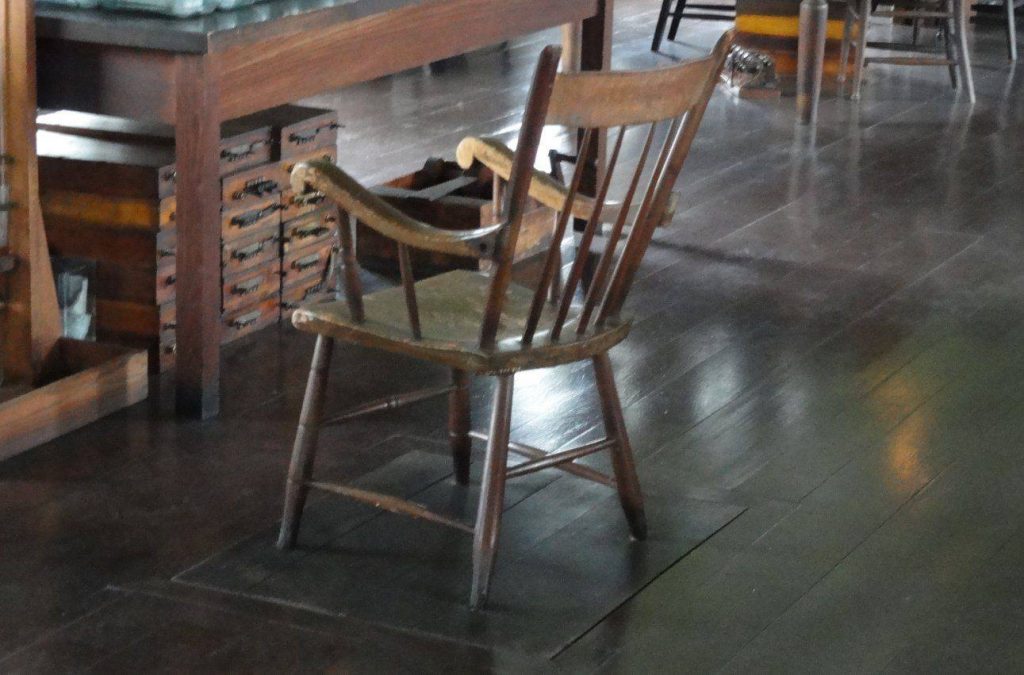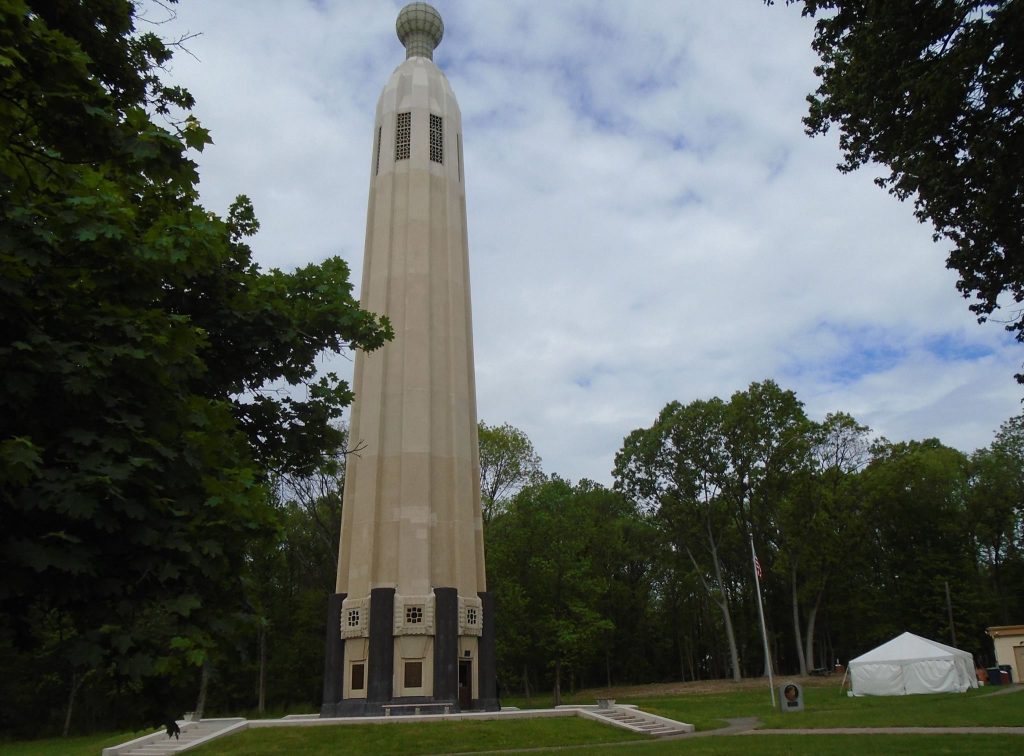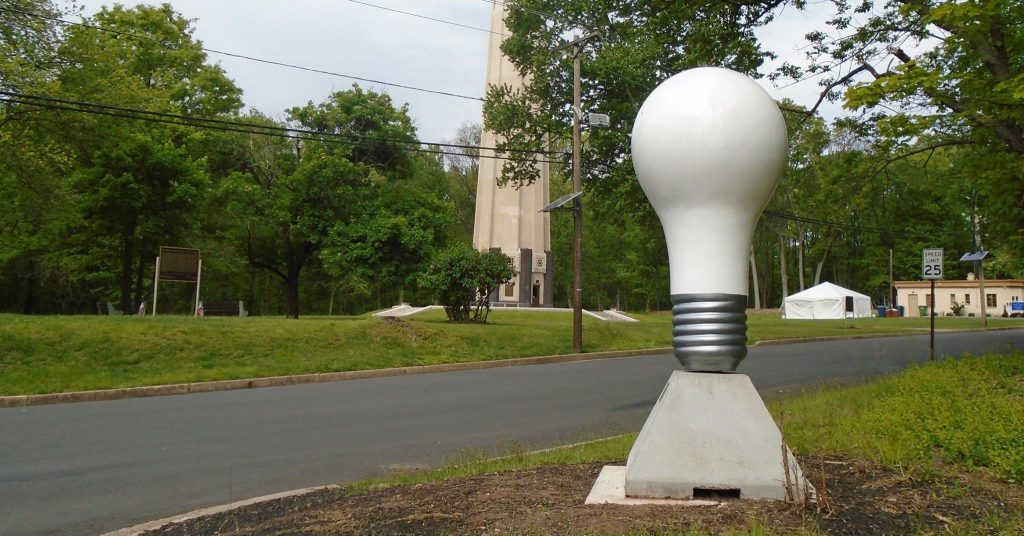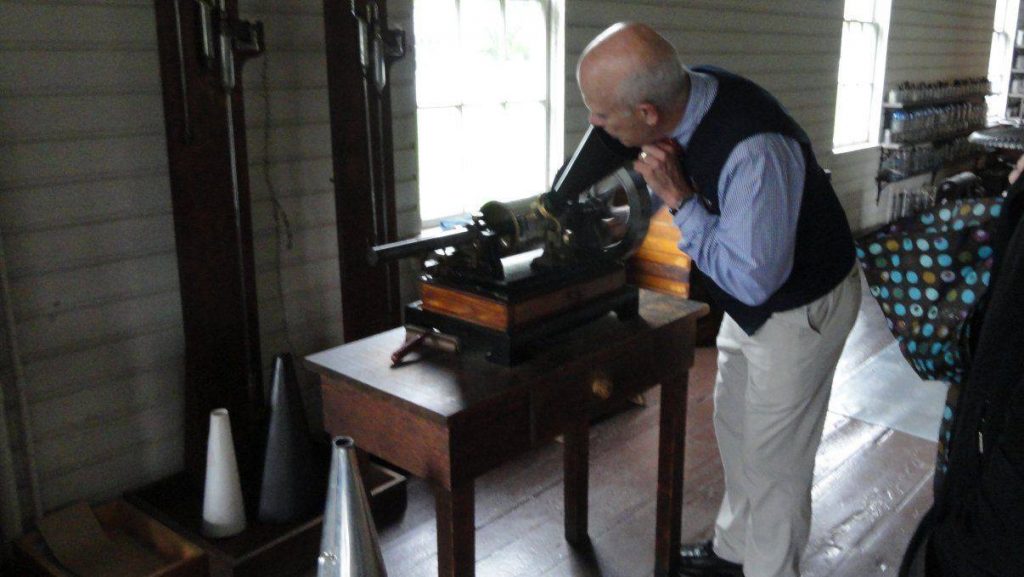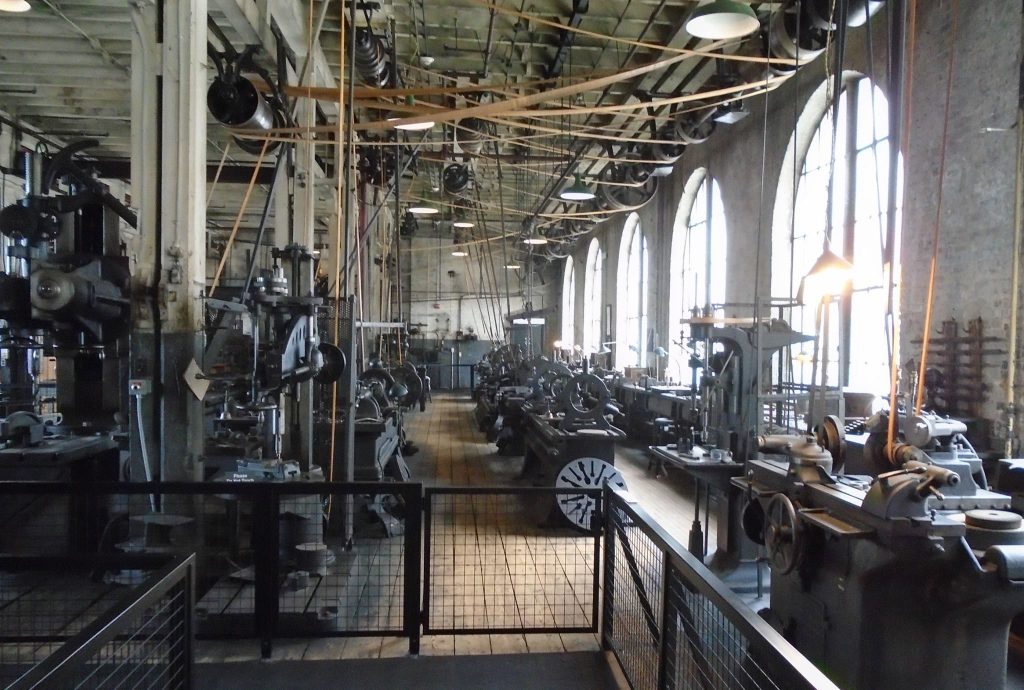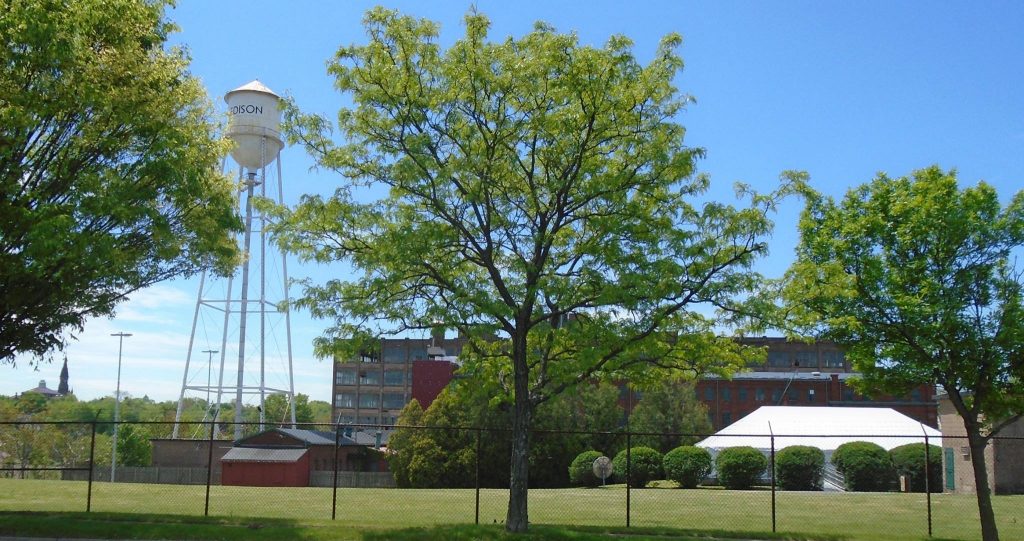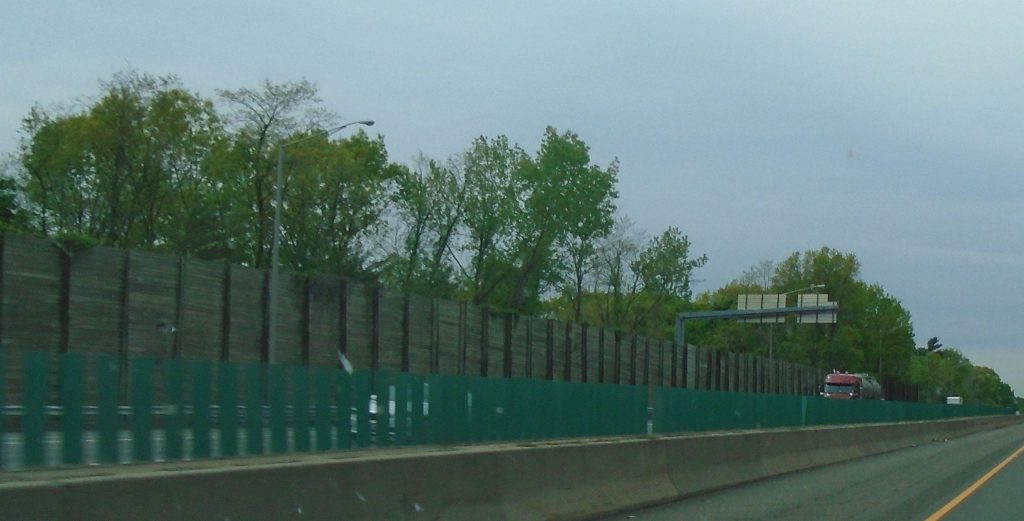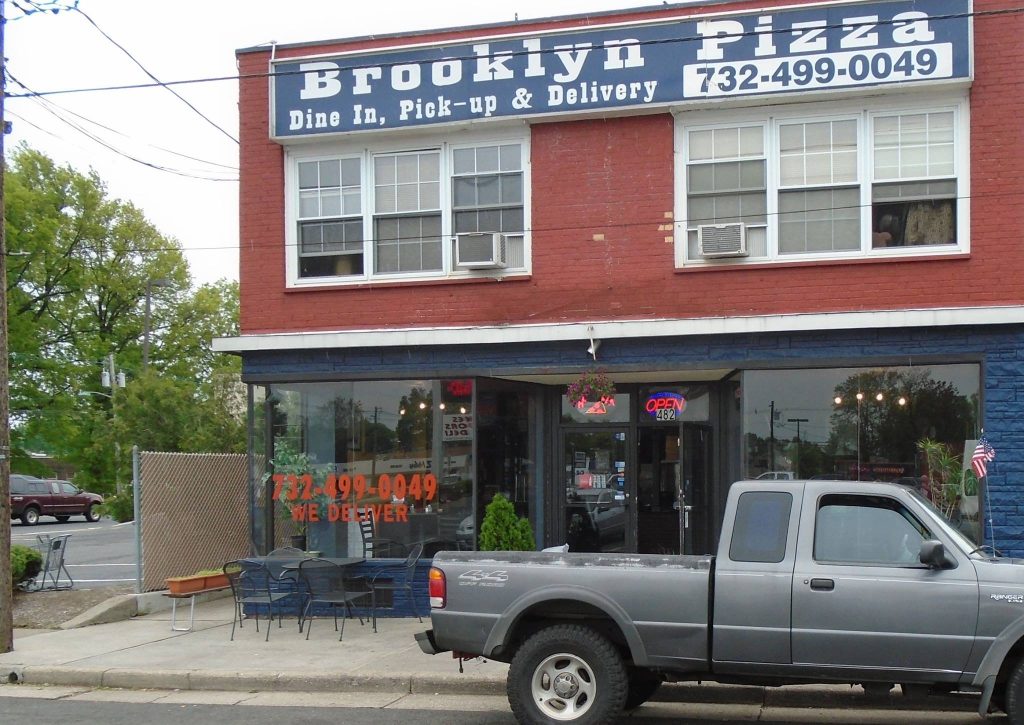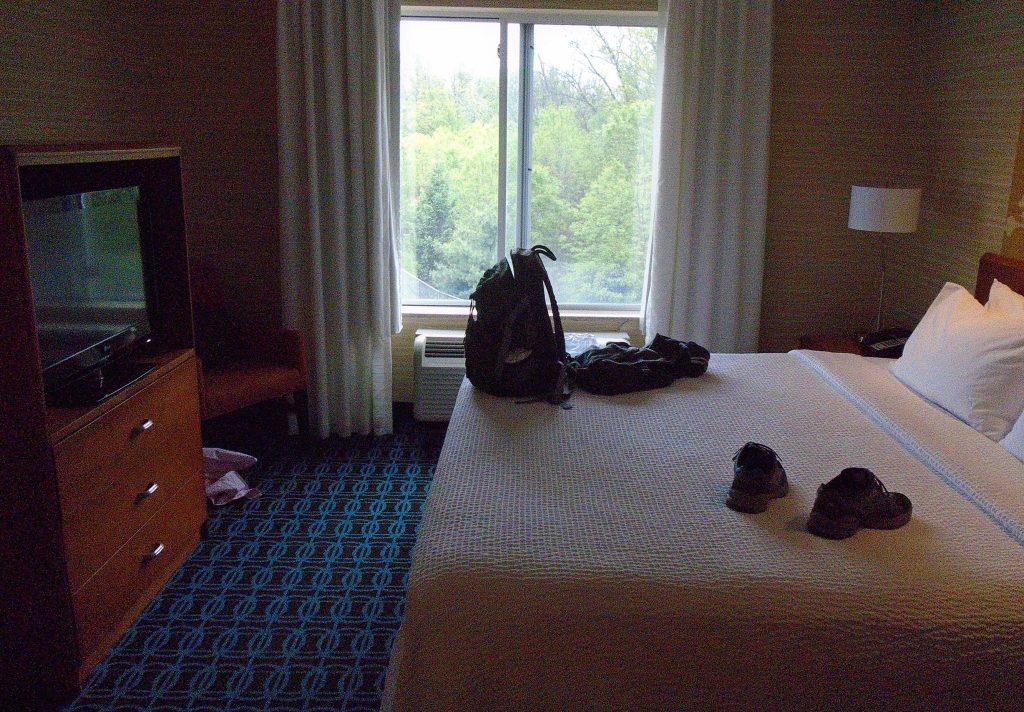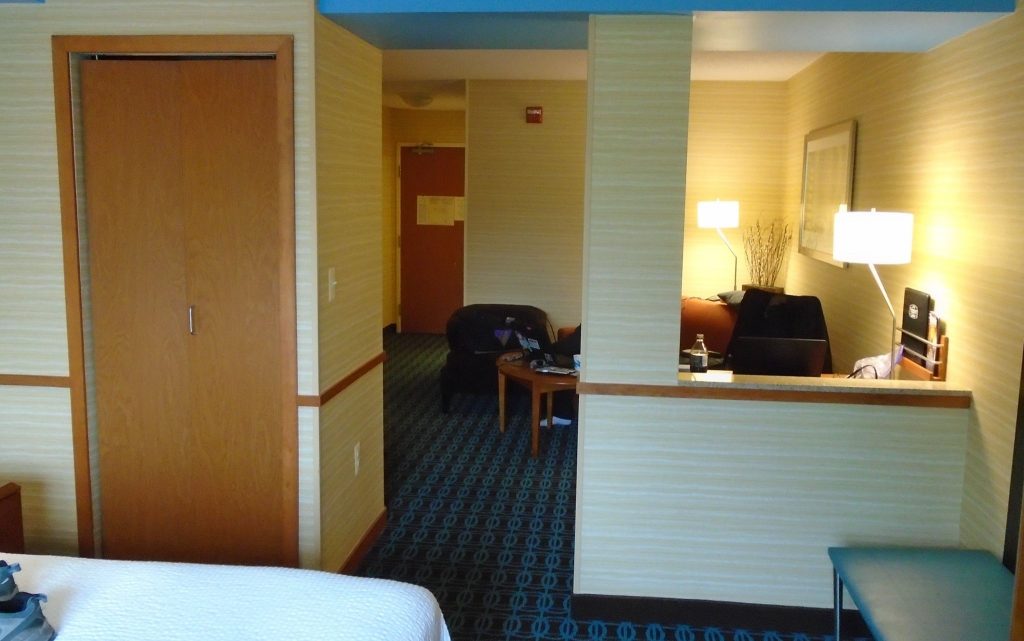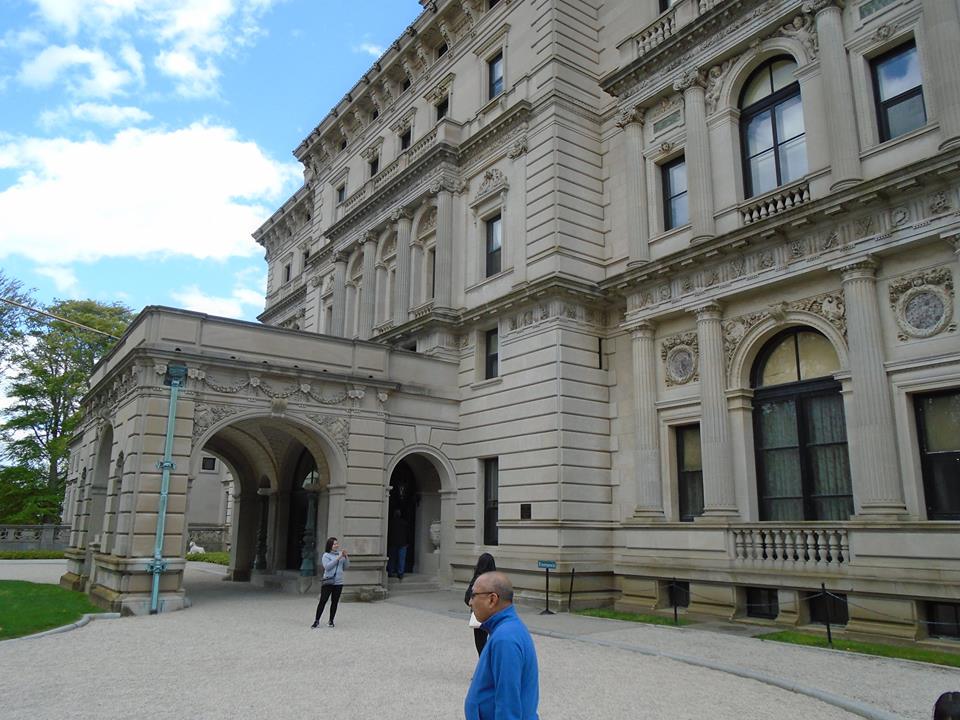Colonial Williamsburg gives an idea of life in Virginia a few centuries ago. It is a pleasant place with lots of period buildings and big trees. But it is more pleasant in our modern contemplation than it was to live in those times.
The English were not prepared for Virginia. It was deadly to many of them and you can understand why. We live in a tamed Virginia today. Back in those days, there were all sorts of dangers ranging from unusual diseases, to very hot and humid weather to hostile natives. We do not really live in nature as they had to do.
They built as they did in England. You can see examples in the photos. These houses are adapted England’s generally cool wet climate. In pre-airconditioned Virginia, these neat, buttoned-up houses must have been stifling. Of course, people spent a lot of time outside.
American traditions: National Guard & Post Office
Alex and I went downtown to see the Postal Museum and the National Guard Monument nearby. Both near Union Station.
The exhibits at both were good, but better was that they provoked some thoughts about America and how we built our country. Both the Post Office and the National Guard have deep roots and were essential to making American what it became. Both go back to the beginning.
Virginia National Guard
The National Guard is obvious. It is the descendant of the famous Minute Men and the tradition of citizen soldiers has been tightly entwined with the American character from before the Revolution to today. Serving as a citizen soldier is both a duty and a right of an American citizen. These are the guys who extended and protected our frontiers.
And they fought in all our major wars. Alex’s unit – 116th Infantry Regiment from the 29th Infantry Division from Maryland, DC and Virginia – landed on Omaha Beech on D-Day. A Company from Bedford, Virginia proportionally had the highest D-Day losses. More recently, the Virginia Guard has served in Iraq and Afghanistan. Of course, Alex recently returned from his deployment in Qatar.
The Post Office
Like the National Guard, the Post Office predates the American Revolution. Ben Franklin was a postmaster.
The Federal footprint was small in the early republic and the Post Office was often the part of Union average citizens saw most often. The letters people wrote helped bind our nation together and the letter immigrants wrote back to friends and family in the old country brought in more waves of immigrants.
It is easy to forget how important connection through the post were before our age of easy communications. Divided by time and distance, people were bound in epistolary relationships. These could be as dense and were often deeper than those we enjoy today. People took time to compose their thoughts and share them. Much of our historical writing is based on letters. Letters between John & Abigail Adams, or between John Adams & Thomas Jefferson are worthy of being called literature.
W/o a reasonably effective Post Office, American would never have developed into the great country we are today. Today it is fashionable to ridicule the Post Office. “Going postal” is a way of describing crazy. This is likely unfair today and it certainly was not appropriate in the past. Besides the connections mentioned above, careers in the Post Office were instrumental in helping generations of poor and immigrants to pull themselves into the middle class.
Nature at Manassas
More from Manassas – Civil War battlefields are almost always located on places with interesting ecology. Makes sense. They are places that were farms, fields or forests in the 1860s and they still are today. We know more of the history of the land than we otherwise would because of the action there and because of attempts to maintain it as it was.
The area around Manassas was given over to general farming in those days, a variety of crops and dairy. The land had been cleared of forests for more than a century by then. There were fewer trees in 1860 than there are today. The big reason was the need to feed horses needed for farm work and transportation. It takes more than an acre of grass to maintain a horse, so most of the land had to be kept clear of trees. We forget that it was mechanization of agriculture that allowed the return of forest in eastern North America.
The Manassas battlefield park is now managed to keep it looking like it did during the Civil War but also to support wildlife. The Park Service does not maintain livestock, which makes the land significantly different than it would have been back then. Grazing animals alter the land in many ways. Instead of grazing, the Park Service mows the fields. If they did not, forest would quickly take over the open fields.
My first picture shows the Virginia landscape. We have a beautiful state. Next two pictures show early succession. As I wrote, if they stop grazing or mowing, the trees quickly move in. They seem to have stopping mowing in the section shown in the photos. The next picture shows dead ash trees. Showing the ash apocalypse is sad, but the emerald ash borer is doing a job on ash trees all over America, as I have written elsewhere.
The last picture shows a gravel path through the woods. There is something very attractive about a gravel path through the woods. It beckons you on. It has visual auditory and tactile aspect. The visual is portrayed in the photo. The auditory is the rhythmic sound of your own footsteps. You feel progress. The tactile feel of the stones underfoot is satisfying. Something about a gravel path through the woods that is attractive.
Manassas
I was supposed to pick up Alex in Woodstock at 630, which would have meant leaving home into rush hour traffic, so I got out a little early and stopped off at Manassas battlefield on the way. The Yankees tended to name battlefields after natural features. The Confederates preferred nearby towns. This one is named after the town of Manassas and since it took place in Virginia, that is what the Park Service calls it too. In the North it is the Battle of Bull Run, after the nearby creek. Similarly, Antietam is named according to the Union name because it is in the Union state of Maryland. Southerners called Sharpsburg, after the town.
There were two big battles on this ground. Both were confused affairs and in the end the South won both. Manassas 1 was the first major battle of the Civil War. The hero, at least from the Southern point of view, was Thomas Jackson, afterwards called Stonewall Jackson. The Rebs were retreating when they were rallied by General Bernard Bee, who said something like, “There stands Jackson like a stone wall! Rally behind the Virginians!” There is a very muscular statue of Jackson on the spot.
Nobody really knew what to do in this battle. Many of the Confederates were still wearing their Union uniforms. A Wisconsin regiment was fired on by Union troops because Wisconsin troops were dressed in previously perfectly acceptable military gray. On the other hand, troops from Louisiana approached much closer to Union lines before coming under fire because they were dressed in blue. Beyond that, the Confederate stars and bars looked a lot like Old Glory. That is why they adopted the better known crossed bars battle flag.
1st Manassas showed the importance of railroad and the idea that you could move troops rapidly and decisively. The battle was going poorly for the Confederates when Brig. Gen. Joseph E. Johnston arrived from the Shenandoah Valley by railroad and the new troops turned the tide.
A couple of things to remember about this or any other historical site – the people involved didn’t know what we know. At Manassas, both sides thought of this as kind of an easy affair. The war would be over quickly, they thought. The fact that there was really a civil war on was hard to accept. Another thing to recall is all that old stuff was new at the time. Many of the houses were built within the last decades. They were newer for them than my house is for me.
Feel some sympathy for the unfortunates living on the land. This was not a battlefield to them. It was just their farms and homes, when suddenly a large number of armed men showed up and starting shooting at each other.
The most memorable resident is one Wilbur McLean, a local wholesale grocer with a house near Manassas on what became the battlefield. After the unpleasantness, he decided the neighborhood was a little too active. He decide to move to quieter part of the state. He chose the quiet little town of Appomattox. Generals Lee and Grant signed the surrender documents in the parlor of his new house.
My first picture shows the Stonewall monument. Next is a row of cannons. All these battlefields are full of canons. Must have had a lot fo them. The wooden fence is interesting because it is the kind common at the time. It indicates how plentiful wood was at the time. Finally, is a picture of one of the markers that shows the various types of uniforms and the Confederate battle flag.
Gettysburg
Stopped off at Gettysburg on the way home. I have been here a few times before, the first time in 1985 with my colleague Rick Roberts, who knew the facts of the battle very well and gave a great commentary. But each time it is moving. So many brave men and each shot or shell that killed or maimed, killed or maimed an American, since we were on both sides. (None of my ancestors was in American during the Civil War, but one of Chrissy’s fought with the Wisconsin regiments.)
My first picture is the “high water mark”. Some Confederates got just about to where the sign shows and then were turned back. This was the culmination of Pickett’s charge. (It should more properly be called Longstreet’s advance, since General James Longstreet was in overall command and Pickett’s division was only one of three participating.) Confederate Brig. Gen. Lewis A. Armistead leading the troops was killed on that spot. Ironically, Armistead’s’ best friend Winfield Scott Hancock, commanded the Union troops. Many of the officers knew each other and had been friends before the war. The end of the charge was effectively the end of the battle, the bloodiest on American soil. Although the war would drag on until April 1865, this battle and the fall of Vicksburg the next day sealed the fate of the South.
12,500 men set off across that field. Only a few successfully covered the 3/4 miles to the high water mark. When they finally retreated only about half were left.
The next picture shows Confederate commanding general Robert E. Lee at the Virginia monument. This is the place where the the attack commenced. The next picture shows the field looking the other direction. The trees at the edge are the clump of trees that Lee told James Longstreet to use as his objective in the attack.
The fourth picture shows Chrissy sitting with a statue of Abraham Lincoln. The battle is famous for its size and consequences, but it is even better known as the place where Lincoln delivered his Gettysburg Address. It is a beautiful and short speech that many of us memorized in HS. It consists of only 272 words and Lincoln wrote it himself. Would that today’s politicians could be so concise and thoughtful.
I had to add the last picture, which shows the monument to the First Minnesota Volunteers. On the second day of the battle, they were ordered to charge oncoming Confederate troops who outnumbered them 5 to 1. The Minnesota volunteers succeeded in blunting the advance but at the cost of an 82% casualty rate. The 47 survivors found themselves in the middle of the battle the next day and were ordered to charge again, this time to blunt Pickett’s charge. They again showed their heroism.
Edison and Menlo Park
Edison set up his research laboratory in Menlo Park, now part of Edison Township, New Jersey. This is where he invented the phonograph and the light bulb. He later moved his home and factories to West Orange, NJ. Nothing is left of his Menlo Park facility. It was already in ruins when Henry Ford bought what was left and moved it to Michigan to be part of the Henry Ford Museum.
On the site today is a tower and a light bulb model you see in the pictures below.
The light bulb is the image of invention. Edison’s inventions in general changed the way we live. Chrissy and I have been visiting Newport, RI and the houses of the rich and famous. They were early adopters of electric lighting. Before that, in a world lit only by sunlight and fire, interior spaces were dark most of the time. You could use candles or kerosene, but it was still pretty dim and you faced the problems of smoke and dangers of fire.
The light bulb was not Edison’s first invention. His first invention was a machine that recorded Morse code. It allowed the much more rapid transmission of telegraph messages. When Edison played it back, he noticed that it made sound and got the idea that he could record other sounds.
The first picture below is the iconic light bulb. Next is the tower that marks the spot of the old Menlo Park laboratory. The third picture is Edison’s chair. Henry Ford bought it, nailed it to the floor and had the chair and the surrounding floor shipped to his collection in Michigan. The last picture is Greenfield Village, part of the Henry Ford Museum in Dearborn, Michigan. It is a collect of buildings typical of America in the turn of the century. The last two picture are from an earlier trip. Link to that is here.
Edison and West Orange
We went to West Orange, NJ to look into innovation and Thomas Edison. Edison invented a practical light bulb, the phonograph & the motion picture camera. At least that is what I learned in school. Since then, I have come to understand that invention or discovery are rarely that simple. No one individual is responsible. Rather, many factors come together that enable the leap.
Progress comes as punctuated equilibrium. We certainly credit Edison with amazing creativity, but he sprung from the same fertile soil that produced the Wright brothers, Henry Ford, Harvey Firestone & George Westinghouse among many others. We call them inventors, but maybe a better term is innovators, since they bring together lots of ideas and people and put them together in different ways. That is where the “fertile soil” comes in. When you get a bunch of innovators together, they innovate as the ideas bounce around, mutate, evolve and improve. That is why giving credit to a single inventor is so hard.
All that aside, Edison was a great inventor and a great innovator as an individual. If he depended on the ecology of innovation, he was a big part of that ecological system. He understood this better than most. He knew great innovations often come in a flash of innovation … followed by years of hard work to make them practical. Edison was practical. He organized a team for innovation. He invented a system for invention just as Henry Ford invented a process for mass production. You could say that those ideas were “out there” but it took someone to make them work.
Historians today mostly reject and even disparage the “great man theory” and they are right to do so. For some of the reasons I mentioned above, the great man theory does not work to explain history. However, the “shit happens” theory is also unsatisfying. Innovation can happen only when conditions are ripe, but ripe conditions do not guarantee innovation and the innovators set the direction, the path of progress. To the extent that innovations are path dependent, after a few steps the great individuals have indeed made history different than it would otherwise have been. So the great man theory is not wrong, just incomplete. Edison was one of those great men who changed the direction of history.
Opportunity is missed by most people because it is dressed in overalls and looks like work.
My pictures show Edison’s factory in West Orange. Next is the workshop floor. Notice the belts. The machines did not have their own power, but rather ran off the mechanical power overhead transmitted by the belts. The third picture is Edison’s music room. He recorded music there, but lost market share because he refused to hire big names. He was more concerned with technical quality than with star quality. The last photo is an Edison phonograph. The picture is one I took a while back at the Henry Ford Museum. I will include a link to that trip in the comments section and say a little more about Edison in a new post.
Road through Conn., NY & NJ
It took longer than I thought to drive through Connecticut and New York to get to New Jersey. It was good most of the way. Who knew there could be traffic in the middle of the day in and around NYC? My problem getting stuck in traffic is not that I need to be anywhere in particular but rather that I drink lots of Coke-Zero and have to be somewhere with a bathroom. We finally got an opening just inside New Jersey. I found out that you are not allowed pump your own gas in NJ. There is evidently a law against it.
I noticed that the sound walls along the highway in Connecticut were made of wood. This is a good idea. Wood is easy to work, 100% renewable and it tends to absorb sound better than a hard concrete or steel wall. Wood is good.
Everything we know about New Jersey culture comes from watching TV, so it must be 100% accurate and we wanted to have the authentic experience. We found an authentic looking pizza place (see the picture). I know that Brooklyn is in New York, not New Jersey, but I figured close enough. They had a special on calzone and both of us ordered that. They were very big, each one enough for two. I boldly finished mine (Anyone can eat when he is hungry, but it takes a real man to continue after he is full.) Chrissy left half of hers.
We are staying at Fairfield Inn in Edison, NJ. I like Fairfield Inn. They are nice but still inexpensive. I particularly like the mini-suites. If I build a house of my own, I would build a mini-suite like this for one of the rooms.
Being rich in the gilded age
Still in Newport looking at the mansions of the formerly rich and famous. Among the places we visited was “The Breakers” one of the Vanderbilt homes. I know it is fashionable to criticize these fat cats, but they did built fortunes and patronize the arts. Alfred Vanderbilt was aboard the Lusitania, torpedoed by a German U-Boat in 1915. After helping other passengers get into lifeboats, he gave his own life preserver and place in the boat to a young mother. I could not picture many of today’s rich celebrities doing something similar.
Anyway, I do not think it really was so much fun to be rich in the Gilded Age. Forget about the office work, parties were hard work. Keeping up with social engagements must have been deadly.
I met an ambitious young man a few years ago whose goal in life was to get rich. He was a smart guy and an extremely hard worker. He was on his way to success in his life venture when he died of a heart attack at the age of 42. Sic transit gloria mundi is only one lesson from his short life and not the one I thought most important.
“Why do you want to be rich?” I asked him, “What do you want so much?” He explained that the joy of being rich is that you would need to own almost nothing. It makes sense when you think about it. If you are really rich you can rent whatever you want, exactly what you want when you want it. Owning anything is a problem. When you are really rich you just use stuff.
My pictures show some of the opulence. The last picture is the bathroom. Consider, this is the home of one of the richest men in the world, but he still has a bathroom most of us would find inadequate. Progress is great. An ordinary guy today can live better overall than the rich guys of the past. Sure, you don’t have the opulent house, but you have TVs, computers and much better health care … and a better bathroom.
Next day
We are still in Newport, RI visiting mansions of the Gilded Age. Their palaces remind me a lot of hotels. There is lot of lobby there. No doubt these rich guys had it made, but if you compare their actual lifestyles – absent the status – with my lifestyle, I am much better off. I can travel faster and more freely. My medical care is way better. I have access to many more books than their libraries could hold. My entertainment options are much expanded. My bathrooms are nicer, my water cleaner and my clothes of higher quality. The last one, I know, will be surprising, but consider the no-iron cotton I can have among other things. Technological progress helps the poor much more than the rich, as the luxuries they had have become common to us today.
Consider the armies of servants these guys employed. What did they do? Most of them did stuff now done by machines or not needed. I mentioned the iron-free cotton. They had to employ lots of people to keep their clothes ironed.They had ice boxes stocked by servants. e have refrigerators that just work.
We are stayed at Marriott in Newport, pictured below. I have access to much greater luxury than Vanderbilt. My room is smaller than his, but more pleasant. I have better heat and air conditioning. My lights are brighter. I have TV and Internet and the materials are higher quality. When we drive away in our ordinary Toyota, it will be a much better vehicle than Vanderbilt could have owned. My car just works. Vanderbilt needed a team of servants to keep his carriages and car running. I will be able to drive over paved roads, instead of those bumpy trails he had to use. The technology I enjoy are worth dozens of his servants.
Before 1800, the whole world was poor. The Great Enrichment created lots of possibilities. The 20th Century was one of even greater material progress, more for the poor than the rich. I live better than Vanderbilt, but his lifestyle was not that much worse than mine. The poor of those days, however, were miserable. Lucky to be born in the 20th Century and in the USA. Everything else is just background.
My pictures show the Marriott lobby and the Vanderbilt mansion foyer (lobby). Vanderbilt’s is certainly more opulent. Marriott’s is more functional and, IMO, nicer.
Next Day
We went to a three more mansions today. I learned that Victorian homes were/are dark and that my camera does not take pictures well in low light, no matter how hard I try to hold still.
If you can cut through the envy, you realize that some of these fat cats were admirable. The one I liked is George Peabody Wetmore. His home was Chateau Sur Mer. His father made a fortune in the China trade, so George inherited the business and we cannot credit him with building wealth. He did maintain it and use it wisely. He was well educated and actively studied many subjects. He served in the Senate and as Governor of Rhode Island; he worked on the design committees of many of the monuments in Washington and on a variety of charitable causes. Recall that he did not NEED to do anything. He took his wealth and position seriously and worked to be a good man and a useful citizen, but often declined recognition and honors. Consider today’s rich and famous in contrast. Can we imagine Kanye or the Kardashians being useful and modest? Anyway, I enjoyed visiting his house and the grounds. He was a tree lover and the ground still feature a variety of fine trees. My pictures show some of them. First is an English oak. Next is a grove of Japanese cedars. Third are fern leaf beech and last is an English elm.
Rio Negro meeting Rio Solimões
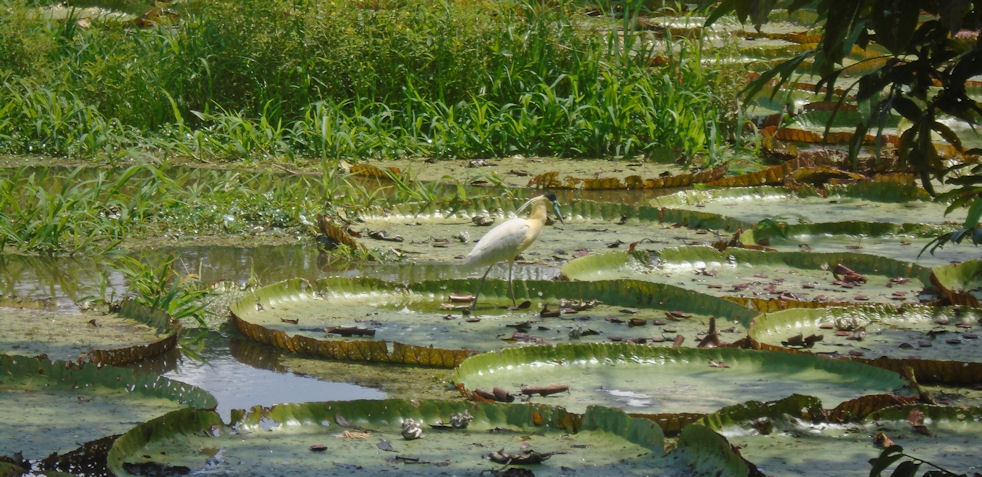
The meeting of the waters is the place where the Rio Negro and the Rio Solimões meet to form the Amazon. The rivers are very different. The Rio Negro is mostly black with a pH of black coffee. The Solimões is like coffee with cream and full of silt. The two meet just past Manaus and the two waters run side by side, visibly different for a few miles.
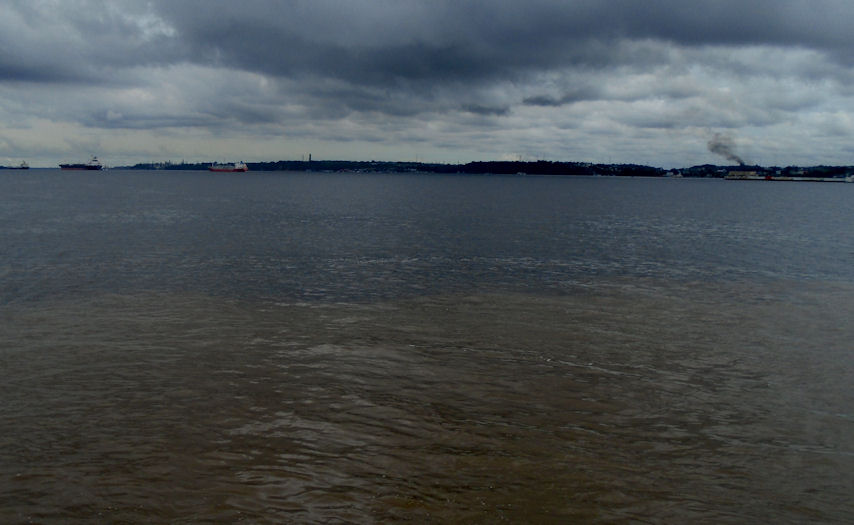
It is de rigueur to visit the meeting of the waters if you go to Manaus and we did. IMO, it is one of those things that is worth seeing but not worth going to see. It looks like some muddy water mixing in with some less muddy water. The river trip was long, but interesting.
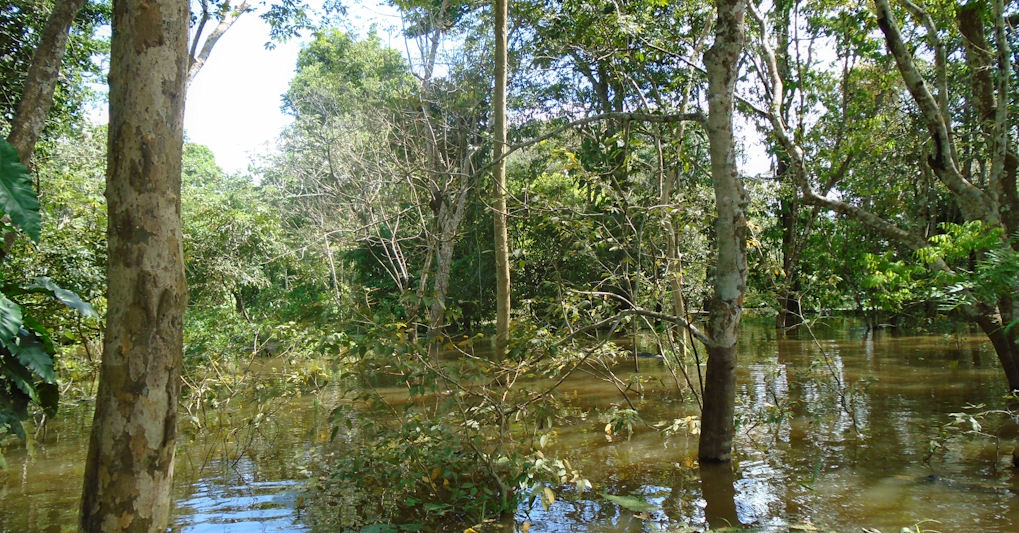
We went up the Solimões. The river is very much alive, lots of fish and plants. We stopped off at a riverside restaurant. The food was unremarkable. It probably was not alone worth the trip. But I did enjoy the lilies and river. I am very fond of these kinds of swamp landscapes. The trees were full of monkeys. You could hear the howler monkeys howling. It was an interesting experience.
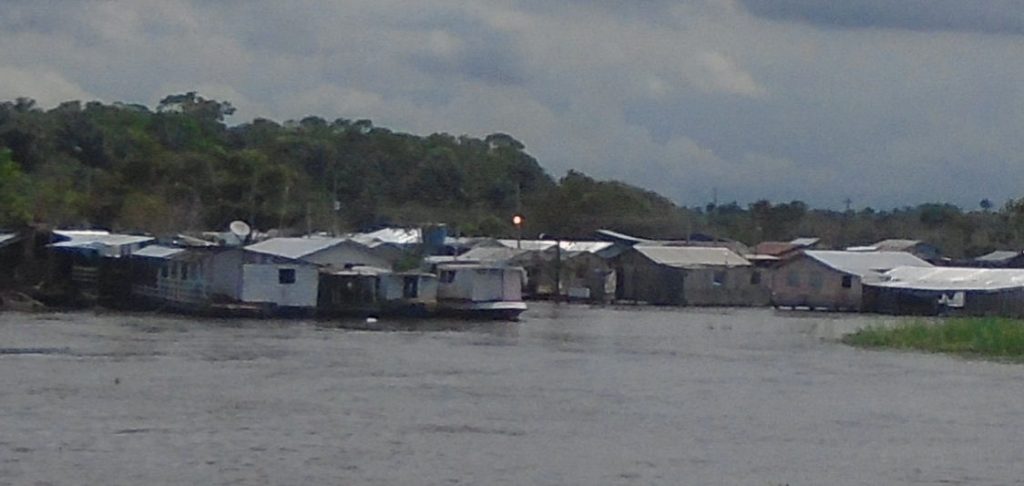
Along the river are shacks made most of tin and scraps. The guide told us that government had recently furnished them with electricity and other amenities. I don’t think this is a good thing. It is nice to give people things to make them more comfortable, but perhaps eking a living from the river like this is not something to be encouraged. It is not environmentally friendly to live on these margins either.

Above is a floating gas station. Lots of things on the rivers. Below is another future problem. There are places where you should not build houses.


